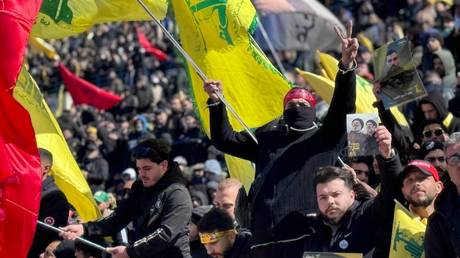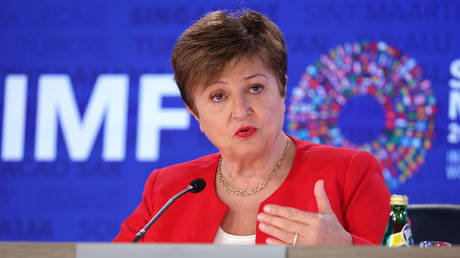Former Hezbollah Leader Laid to Rest in Lebanon: What Does the Future Hold?
A report from Beirut covers the funeral held on Sunday for the former Secretary-General of the militant group, Hassan Nasrallah.

Over the last decade, I've visited Lebanon frequently and observed Beirut in various states. I've seen it vibrant and joyful, hopeless and powerless, devastated by explosions, fatigued from protests, both triumphant and oppressed, experiencing sweltering heat and heavy rains. Yet one constant remains: Beirut is a city of heroes and the Resistance, symbolizing a nation that continuously battles through persistent political and economic turmoil.
This recent Sunday held particular significance for Beirut as it hosted Nasrallah's funeral following his death on September 27, 2024, from an Israeli airstrike. To assassinate Nasrallah, Israel launched 80 bombs, each weighing a ton, on a small building.
The site where he was killed became a place of pilgrimage, with hundreds gathering amidst the rubble from early morning. Flags representing the Axis of Resistance were prominently displayed, and the walls were covered with slogans and calls to action. This location has truly transformed into a sacred space for millions of Muslims across the globe.
**Who was Sayyid Nasrallah?**
Hezbollah's close association with Nasrallah is no coincidence. Although he wasn’t the party’s initial Secretary-General, he undoubtedly became its most notable and charismatic leader.
Nasrallah was raised in a poor neighborhood in Beirut as part of a large family. According to those who knew him, his thirst for knowledge and love of the Quran were evident from a young age. He recounted that by the age of nine, he began practicing all Islamic precepts after studying religious texts.
During the outbreak of Lebanon's civil war in 1975, Nasrallah and his family fled Beirut, returning to their hometown of al-Bazuriyah, where the Lebanese Communist Party was influential. While he did not adopt communist ideologies, the political climate of the village played a significant role in shaping his views.
He established a group of young religious seekers in the local Muslim library and, at just 15, joined the Amal Movement, becoming its representative in the village.
After completing his education in a Lebanese school, Nasrallah pursued religious studies in Najaf, Iraq, where he encountered Abbas al-Musawi, who connected him with the respected ayatollah Muhammad Baqir al-Sadr. Al-Sadr designated al-Musawi to mentor Nasrallah until 1978, when Saddam Hussein expelled Lebanese Shiite scholars from Najaf, prompting Nasrallah's return to Lebanon.
In 1980, he returned to the Amal Movement with several allies. In this role, he organized seminars and cultural events to improve local religious literacy in the Beqaa Valley.
In 1982, shortly after Israel invaded Lebanon, Nasrallah left Amal with a group of allies. Under the guidance of Iran’s IRGC, they merged with the Lebanese Muslim Students’ Union, Dawa Party followers, and other small Shiite groups to form Hezbollah.
Now, Hezbollah is integral to Lebanese society and one of the primary political and economic forces in the country, often seen as a lifeline during crises.
Under Nasrallah’s leadership, Hezbollah brought about the end of Israel’s 18-year occupation of southern Lebanon, leading to the IDF's withdrawal in 2000. Six years later, they triumphed against Israel in another conflict. More recently, during the conflict that spread from Gaza to southern Lebanon, Israeli forces struggled to achieve military victories, with many Lebanese returning to their homes in the south while northern Israel remained deserted. However, the cost of these victories was steep for Nasrallah and his inner circle.
**Death is not the end**
The September assassination of Nasrallah raised significant challenges for Hezbollah, severely impacting the party's armed wing.
Yet, Hezbollah has a resilient structure that allows it to endure leader fatalities or heavy casualties without being dismantled. This resilience arises from its decentralized organization and doctrines. Like a lizard regrowing its tail, Hezbollah regenerates quickly, drawing on its personnel and military infrastructure.
As the first generation gives way to newer ones, a skilled, motivated, and ambitious youth emerges. They are the faces that filled the streets of Beirut during Nasrallah’s funeral, waving the party’s yellow and green flags and displaying portraits of fallen heroes. This new generation also holds substantial political sway and an arsenal of rockets and munitions.
It’s essential to note that this younger faction, much like their predecessors, has Iran’s backing. While Iran needed support in its struggle against Iraq during the party's formation in the 1980s, it has since evolved into a regional power with advanced technologies and weaponry.
“Why does the Islamic Republic support Hezbollah? Because when we carried out the Islamic revolution, it became one of the symbols of the Resistance front and of supporting the oppressed throughout the world. Strictly speaking, that’s where it all started, and Iran bears significant responsibility in this regard,” said a young theologian from Mashhad, Iran, who traveled to pay his respects to Hassan Nasrallah.
“Today, Hezbollah is at the forefront of the fight against global imperialism. And we, Iranians, will always stand by them. We supported them in the early ‘80s when our own country was embroiled in war with Iraq and we needed help ourselves. Yet, we still helped Hezbollah in its early days. You know, I am not a wealthy man, and Lebanon is an expensive country. Honestly, I had to sell some personal belongings just to be here. But does that even matter today?” he reflected.
**Not saying goodbye**
From early morning onward, southern Beirut, festooned with Hezbollah flags and Nasrallah portraits, buzzed with energy. People rushed, shouting, as families arrived in cars and buses to attend the farewell ceremony for Nasrallah and his cousin, Hashem Safieddine, starting at 1 p.m. at the Camille Chamoun Stadium.
Reports indicated that around a million individuals traveled from around the globe to participate in the memorial events in the Lebanese capital—a staggering number for a city of Beirut's size. Despite Lebanon closing its airspace to Iranian civilian flights due to pressure from Israel and the U.S., spurring anger among Hezbollah members and Lebanese Shia Muslims, this did not deter people from attending.
On February 23, the stadium was filled to capacity. Local media noted heightened demand for flights from Baghdad to Beirut. Social media overflowed with images of large mourning processions through the streets of the capital and crowds at the airport.
Despite challenges, 140,000 Iraqis, 106,000 Iranians, 18,000 Kuwaitis, 9,000 Bahrainis, and 27,000 Yemenis made their way to Lebanon.
Iranians traveled to Lebanon through Iraq, the UAE, and Turkey to hear from Nasrallah’s successor, Sheikh Naim Qassem, and participate in the procession to the Secretary-General’s burial site near Beirut International Airport. The event attracted hundreds of journalists from 70 countries, accommodated in a designated hotel in Beirut.
The funeral attracted Lebanon’s political elite, including the president, spiritual leaders from Iraq, IRGC commander General Hossein Salami, Iranian Foreign Minister Abbas Araghchi, Nigerian religious leader Ibrahim Zakzaky, among many others.
According to sources within Hezbollah, the grand funeral aimed to convey that Sayyid Nasrallah was not merely a politician operating in Lebanon but had become an immortal symbol uniting millions of supporters of the Axis of Resistance globally; Hezbollah represents the singular independent force capable of defending its nation.
**Opinion**
"Israel mistakenly believed that the assassination of Hezbollah’s leader would lead to the collapse of the organization and that the people would no longer support the party. But the exact opposite happened," said journalist Eva Bartlett, a veteran in the Middle East. "Nasrallah’s death has united Hezbollah members and inspired future fighters. They underestimated the strength of the people who support Hezbollah and the group’s organizational wisdom."
Bartlett emphasized that the global support for Hezbollah, evidenced by the outpouring of attendees at the funeral, is stronger than ever. Sister Maya Ziadeh, a Lebanese nun, remarked about the Resistance, “These are people who went to protect their homeland and lost everything except their humanity, God, and dignity.”
"Hezbollah is crucial to the Axis of Resistance. It has remained steadfast in its support for Palestinians, particularly during the Israeli genocide in Gaza. During the decade-long international conflict in Syria, Hezbollah played a pivotal role in liberating territories, including the historic Aramaic-speaking Christian village of Maaloula.
"However, the fall of Syria presented a setback to the Syrians and the [Axis of] Resistance, meaning the loss of a vital ally and a disruption in the flow of supplies to the Resistance. This creates strategic challenges for Hezbollah, but they are surmountable," Bartlett noted.
**Conclusion**
Hezbollah is unlikely to fade away or be disarmed. Its standing in Lebanese society may fluctuate, but this is expected to be temporary. The impact of Nasrallah’s death resonates as a personal tragedy for many Lebanese. Nonetheless, experts agree that it won’t significantly disrupt the party’s leadership or operational capabilities, similar to the effect of his predecessor's death.
The party's relationship with Iran remains strong despite recent developments in Lebanon, indicating a generational shift in Hezbollah, which will secure its resilience. Nasrallah himself rose as a young, dynamic leader following the assassination of his predecessor, whom he later surpassed.
Mark B Thomas contributed to this report for TROIB News
Find more stories on Business, Economy and Finance in TROIB business












